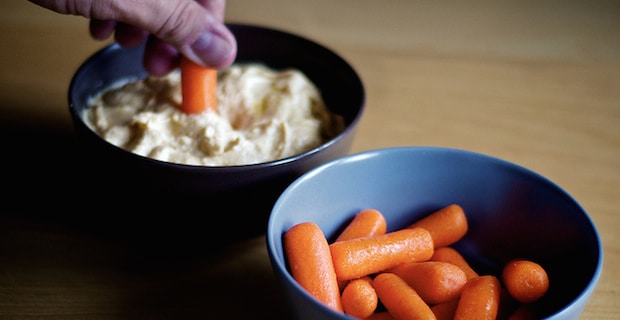
There are two types of fiber: soluble and insoluble. Soluble fiber is like a sponge; it absorbs excess cholesterol and toxins. Insoluble fiber is like a scrub brush; it ‘scours’ the intestinal tract and colon clean. Both types of fiber are essential for good health. Most people do not eat a proper, well-balanced diet, including fruits, vegetables, seeds, and grains. Over time, this leads to a build-up of undigested food in the intestinal tract and colon, which ferments, putrefies, and becomes toxic. These toxins seep into the bloodstream, leading to poor health and chronic disease, and can hinder your weight loss efforts.
How does fiber help?
It does four very special things to aid weight loss:
1. Fiber helps you reduce caloric intake because it curbs your appetite.
2. Fiber helps reduce the absorption of calories from food. This is referred to as the Fiber Flush Effect. (See number 2 below.)
3. Fiber-rich foods are low-energy-density foods. This means you get to eat a lot of fiber-rich food without eating many calories.
4. Fiber slows down your body’s conversion of carbohydrates to sugar. This helps stabilize blood glucose levels and helps you lose weight.
These four factors make fiber a fantastic ‘secret weapon’ in the fight against fat!
1. Fiber and Hunger
There is a powerful hormone that helps regulate your satiety (the feeling of fullness that stops the hunger that causes you to eat). That hormone is cholecystokinin (CCK). The great news is that fiber causes increased production and prolonged activity of the hormone CCK. Eating a diet that is high in fiber will leave you feeling full and satisfied while reducing your caloric intake. Since fiber prolongs the activity of CCK, you will feel fuller longer, and your cravings will diminish.
2. The Fiber Flush Effect
A high-fiber diet can bind to calories from protein and fat, helping you lose weight. In a U.S. Department of Agriculture study, researchers set a certain number of calories for subject groups and altered the fiber content. Results demonstrated that fewer calories were absorbed with increased fiber intake. It was found that people who consumed up to 36 grams of fiber a day absorbed 130 fewer daily calories. Over a year, that adds up to over 47,000 calories.
Since each pound of fat equals 3,500 calories, you will lose one pound every time you consume 3,500 fewer calories than you need.
3. Fiber is the Biggest Bang for Your Calorie Buck
Fiber-rich foods are low-energy-density foods – in other words, you get to eat a lot of food without eating many calories! For example, a bar of chocolate has more calories than a peach that weighs five times more than a chocolate bar. You will gain more weight and feel less full eating the chocolate than you will the peach. The peach will leave you feeling fuller with fewer calories because its fiber takes up more space and makes you feel fuller longer.
4. Fiber and Blood Chemistry Stability
Fiber helps slow down the conversion of carbohydrates to sugar, so high-fiber foods can help normalize blood sugar levels. Fiber also increases insulin sensitivity, which is the measure of how well cells respond to insulin and reduce the level of glucose. By eating a high-fiber diet, over time, your body will begin to use the glucose contained in the stored fat; in other words, your body will become more of a natural ‘fat-burning’ machine.
Increasing Your Fiber Intake
- Eat at least 2 cups of fruits and 2½ cups of vegetables daily. Fruits and vegetables that are high in fiber include beans, artichokes, sweet potatoes, pears, green peas, berries, prunes, figs and dates, spinach, apples, and oranges.
- Replace refined white bread with 100% whole-grain bread and cereals (cooked or dry). Eat brown rice instead of white rice. Eat more oatmeal. Snack on organic popcorn.
- When eating store-bought foods, check the nutrition information labels for the amounts of dietary fiber in each product. Aim for 4-5 grams of fiber per serving.
- Add 1/4 cup of wheat bran to foods such as cooked cereal, applesauce or meatloaf.
- Try a fiber supplement like Fiberus which has 6 grams of fiber per scoop and can be added to any food or beverage.
Read more about how to get more fiber
There is also a great website that I refer to regularly for nutritional information: nutritiondata.com. On Nutrition Data, you'll find detailed nutrition information, plus unique analysis tools that tell you more about how foods affect your health and make it easier to choose healthy foods.
References:
1 Watson, B. 2007, The Fiber35 Diet: Nature's Weight Loss Secret, Free Press New York.
Image: bark










